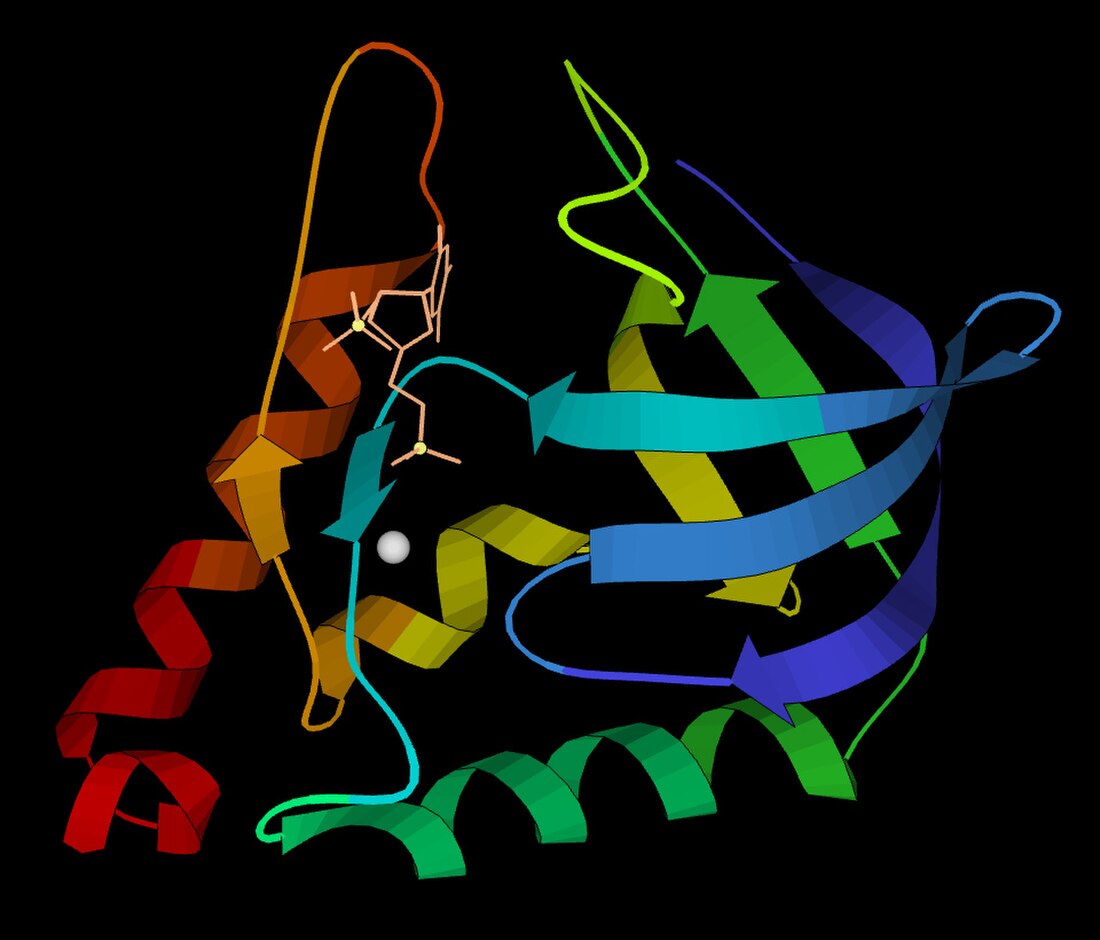Top Qs
Timeline
Chat
Perspective
Micrococcal nuclease
Class of enzymes From Wikipedia, the free encyclopedia
Remove ads
Micrococcal nuclease (EC 3.1.31.1, S7 Nuclease, MNase, spleen endonuclease, thermonuclease, nuclease T, micrococcal endonuclease, nuclease T', staphylococcal nuclease, spleen phosphodiesterase, Staphylococcus aureus nuclease, Staphylococcus aureus nuclease B, ribonucleate (deoxynucleate) 3'-nucleotidohydrolase) is an endo-exonuclease that preferentially digests single-stranded nucleic acids. The rate of cleavage is 30 times greater at the 5' side of A or T than at G or C and results in the production of mononucleotides and oligonucleotides with terminal 3'-phosphates.[1] The enzyme is also active against double-stranded DNA and RNA and all sequences will be ultimately cleaved.
Remove ads
Characteristics
The enzyme has a molecular weight of 16.9kDa. The pH optimum is reported as 9.2. The enzyme activity is strictly dependent on Ca2+ and the pH optimum varies according to Ca2+ concentration.[2] The enzyme is therefore easily inactivated by EGTA.
Sources
This enzyme is the extracellular nuclease of Staphylococcus aureus. Two strains, V8 and Foggi, yield almost identical enzymes.[3] A common source is E.coli cells carrying a cloned nuc gene encoding Staphylococcus aureus extracellular nuclease (micrococcal nuclease).
Structure
The 3-dimensional structure of micrococcal nuclease (then called Staphyloccal nuclease) was solved very early in the history of protein crystallography, in 1969.[4] Higher-resolution, more recent crystal structures are available for the apo form[5] and for the thymidine-diphosphate-inhibited form.[6][7] As seen in the ribbon diagram above, the nuclease molecule has 3 long alpha helices and a 5-stranded, barrel-shaped beta sheet, in an arrangement known as the OB-fold (for oligonucleotide-binding fold) as classified in the SCOP database.
Applications
- CUT&RUN sequencing, antibody-targeted controlled cleavage by micrococcal nuclease for transcriptomic profiling.
- Hydrolysis of nucleic acids in crude cell-free extracts.
- Sequencing of RNA.
- Preparation of rabbit reticulocyte lysates.
- Studies of chromatin structure.
- Removal of nucleic acids from laboratory protein preparations allowing for protein folding and structure-function studies.
- Research on the mechanisms of protein folding.
Remove ads
See also
References
External links
Wikiwand - on
Seamless Wikipedia browsing. On steroids.
Remove ads

